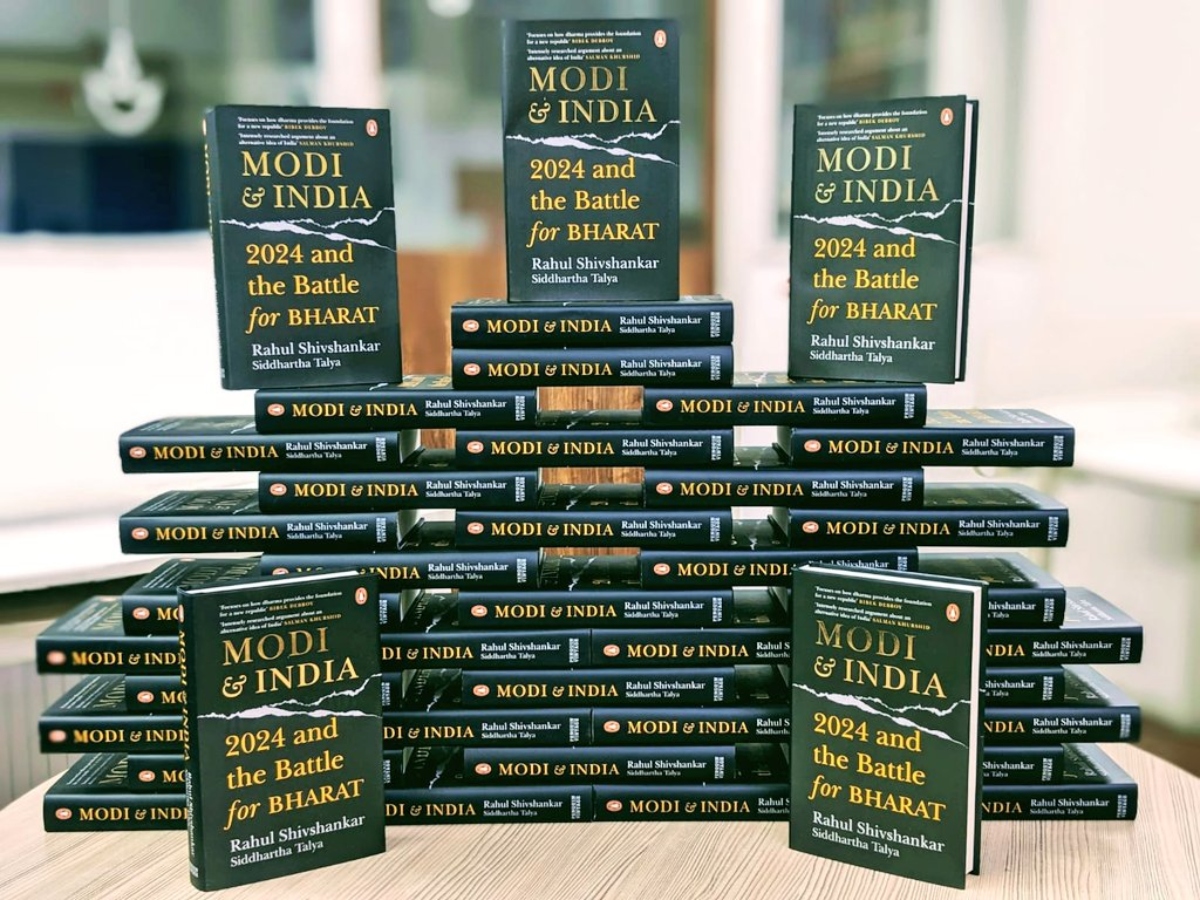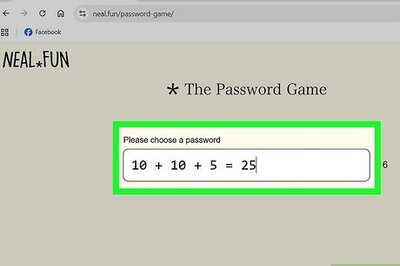
views
‘Unity in Diversity’ is one of the stamp slogans that we have been incessantly fed since school days when describing our motherland. This, in a way, describes the diversity and disparity reflected by the various states and regions while sharing an uncanny resemblance in having a common civilisation and a common nation. But electoral politics, if someone were to simply put it that way, is nothing but a game of numbers. That is the bane or the boon of a republican democracy. Politicians divide us, but politics unites us emphatically!
Recently, the nation witnessed elections in the five states — Rajasthan, Madhya Pradesh, Chhattisgarh, Telangana and Mizoram — where around 16 crore people voted, 7.8 crore of whom, as per the election commission, were women. It’s interesting to analyse and gauge the impact as well as the far-reaching consequences of these polls, given the fact that the nation will now turn its focus to the 2024 general elections. Mizoram is geopolitically a vital state, even though it has a relatively sparse population in terms of registered voters, i.e., 8.52 lakh. Contrastingly, the states of Madhya Pradesh, Chhattisgarh, Rajasthan and Telangana have a staggering vote base of 5.6 crore, 2.03 crore, 5.2 crore and 3.17 crore, respectively.
The takeaways from these unprecedented results in the polls are:
- The Narendra Modi juggernaut is indefatigable and indomitable. Destined to serve, he will not remain idle or be defeated. The mandate is decisive in favour of the BJP and ‘Brand Modi’ with no hung assemblies.
- The “rewadi” or freebie culture has been flatly decried by the electorate. The voters seek development and welfare, not just freebies.
- The BJP has learned that the only seemingly permanent and sustainable plank is “good governance,” and hence, by banking on it, it forays any campaign, whether as an incumbent or as an opposition.
- The entire balloon of the caste census, especially the wooing of the OBCs by the supposed leaders of the dotted INDI alliance, falls flat now that the results are out for us and portrays simply that the voters have consolidated in favour of Narendra Modi and rejected caste-based divisive politics.
- Women voters are the “new caste” in town, and now that they are unremittingly backing the BJP led by PM Modi, the entire political landscape is at an inflection point where women are a decisive constituency, especially after the historic “Women Reservation Act” passed by the Modi government.
- Since the BJP has doubled its vote share in Telangana in the past five years, winning 14 per cent of votes and securing eight seats is more than enough to dispel the notion of a ‘North-South divide’ and prove that the BJP is not non-existent in the South.
- The cornerstone, if one were to elucidate, is, by and large, the acceptance of the ‘Hindutva’, touted and endorsed by the BJP amongst the populace.
The results swayed decisively and indisputably in favour of the Modi-led BJP. The careful analysis of these results unveiled significant micro- and macro-trends, as well as the strategy the BJP is relying on for the upcoming general elections. This is where a newly released book—a highly engrossing and telling read to a student of politics— titled ‘Modi and India: 2024 and the Battle for Bharat’ discovers itself all along, with a transcendental and striking relevance. Authored by veteran political journalist Rahul Shivshankar and colleague Siddhartha Talya, the book also focuses on how the BJP has successfully managed to cultivate a following among a large section of OBCs, SCs and STs by meeting their own aspiration to remain in the Hindutva fold. Additionally, the Modi government itself has been emphasising that more than a third of the beneficiaries of several of its welfare schemes are minorities.

The results of these states confirm the assertions made in this captivating book by the authors: a detailed analysis and an insightful exploration of the factors contributing to the growing popularity of the Modi-led saffron party at the grassroots level. The BJP has realised very well that an over-reliance on identity politics alone to win elections cannot be a long-term strategy.
Two, the authors highlight the fact that the BJP has to tailor its strategy according to local considerations, which it has done successfully in the Northeast. For instance, the BJP has successfully tailored its strategy in Mizoram, winning two seats in predominantly Christian constituencies.
Third, it has managed to work out a strong strategy to counter caste mobilisation by other parties; for instance, it has cornered a large chunk of the non-Yadav, non-Jatav vote in Uttar Pradesh. Yadav and Jatav votes predominantly go to the SP and BSP, respectively. Even in these elections, it has managed to counter the caste census pitch because, as per reports, a large section of the OBC vote has stayed with the BJP.
Fourth, the BJP, under the stewardship of PM Modi, has been able to directly appeal to tribals through the promotion and celebration of local cultures. In this way, it has appealed to the aspirations of many tribals as well as Dalits who have an inclination towards the larger Hindutva rubric. In addition to this, remembering the contribution of tribals in the freedom struggle—invoking the Mangarh massacre, for instance—has also had an impact.
Fifth, the delivery of welfare initiatives is a key priority, and the focus has been on last-mile delivery, in line with the core ideology of the BJP of “integral humanism” and plugging the gaps.
In their enthralling book, ‘Modi and India: 2024 and the Battle for Bharat’, the authors also quote their interview with Badri Narayan, a professor of social sciences. “In Uttar Pradesh, most Dalits are Kabirpanthis (a denomination whose members follow the teachings of the fifteenth-century saint Kabir) and Ravidasis (followers of the fifteenth-century saint Ravidas), and very few of them are Buddhists. That’s the reason why Kanshi Ram (founder of the Bahujan Samaj Party) did not convert to Buddhism. There is a larger section of Dalits who have an inclination towards Hindutva arguments. They desire greater importance within the larger Hindutva fold, which will provide them with greater social respect and dignity. The Hindutva movement is telling them, ‘You’re part of our bigger history; you’ve made many sacrifices, and we acknowledge this.’ In Bundelkhand, for instance, tribal groups, which are now scheduled castes, began placing idols and deities of their communities under trees. As their aspirations grew in society, they also began to demand a temple for their own deity. So, while the Ram temple is fine, they also want their own temple. Who understands this desire? The Hindutva movement is responding to this. Non-Hindutva movements talk about socioeconomic equality but not religious equality, and religious equality is very important for Dalits and marginalised communities.”
The authors have brilliantly constructed a fascinating narrative that flawlessly weaves the fabric of history, the complexities of political discourse, and the intimate force of personal experiences into their masterful cooperation. This is a must-read for anyone looking for a thorough knowledge of the various forces at work in the war for Bharat in 2024. A sublime read, it is a must, especially for the dotted INDI alliance, lest they be complacent ahead of the 2024 showdown.
This is not an election book. This manual serves as a guide for the dotted INDI alliance, offering strategies to pave its path for 2024 and overcome its bête noire, Narendra Modi.
Yuvraj Pokharna is an independent journalist and columnist. He tweets with @iyuvrajpokharna. Views expressed in the above piece are personal and solely that of the author. They do not necessarily reflect News18’s views.
















Comments
0 comment